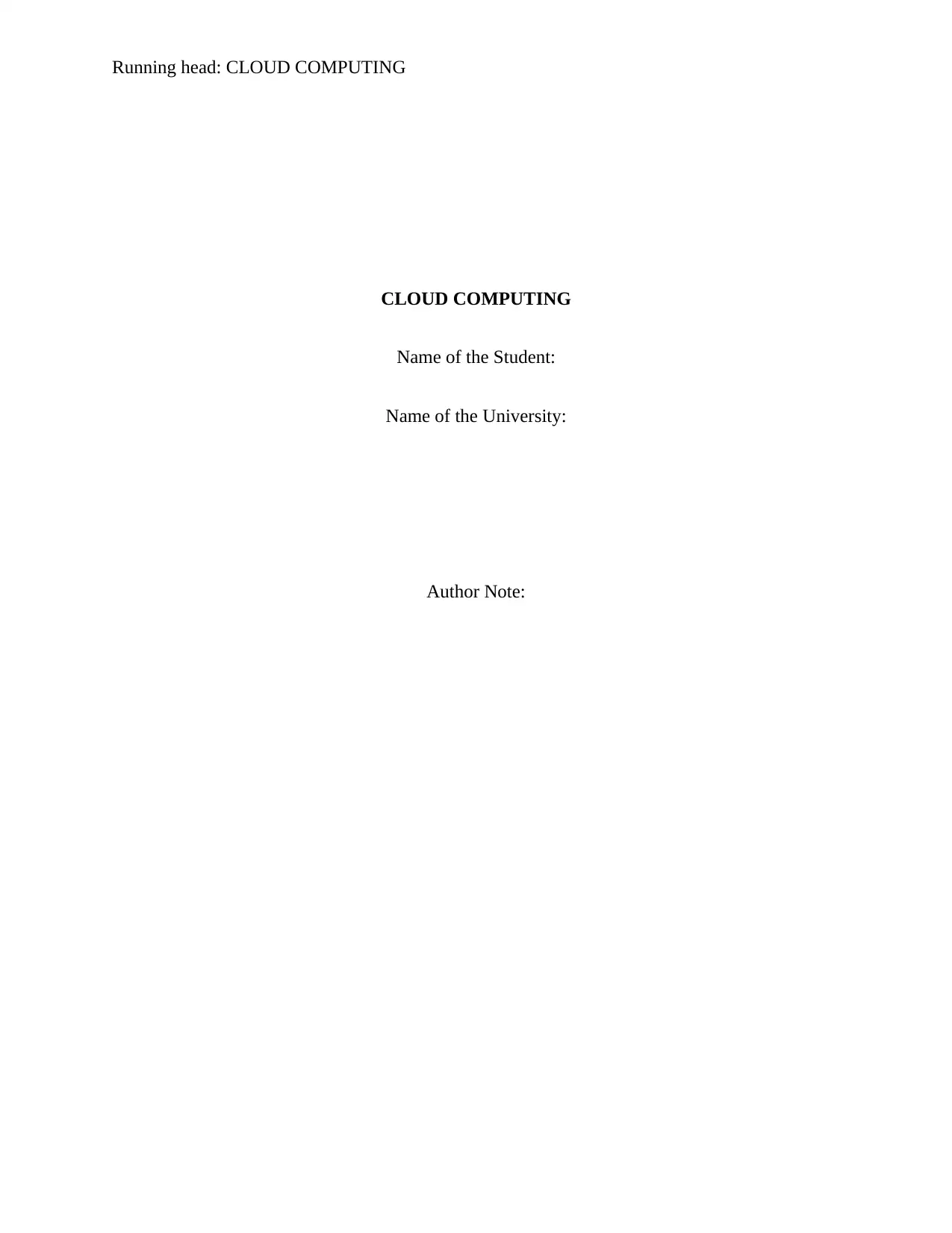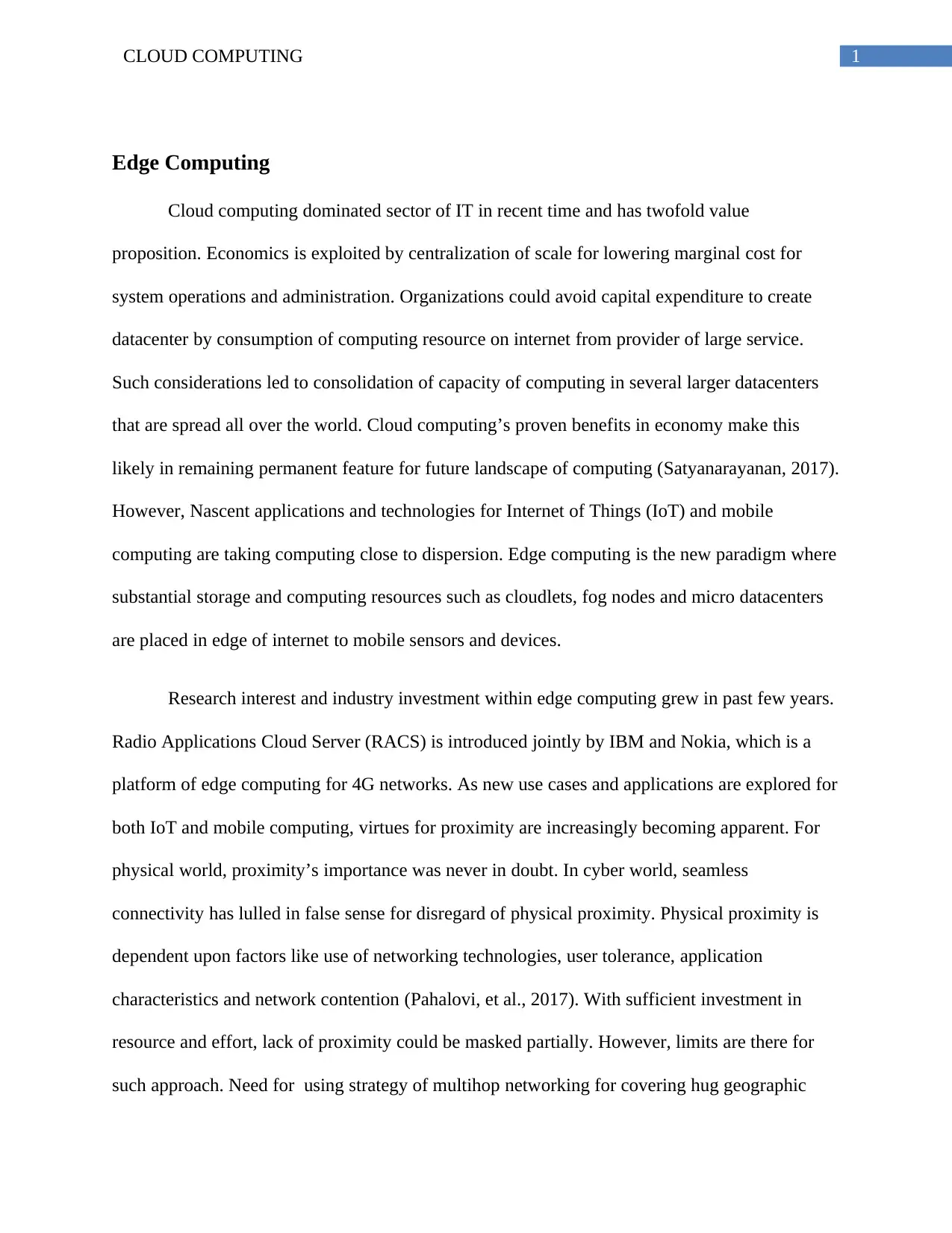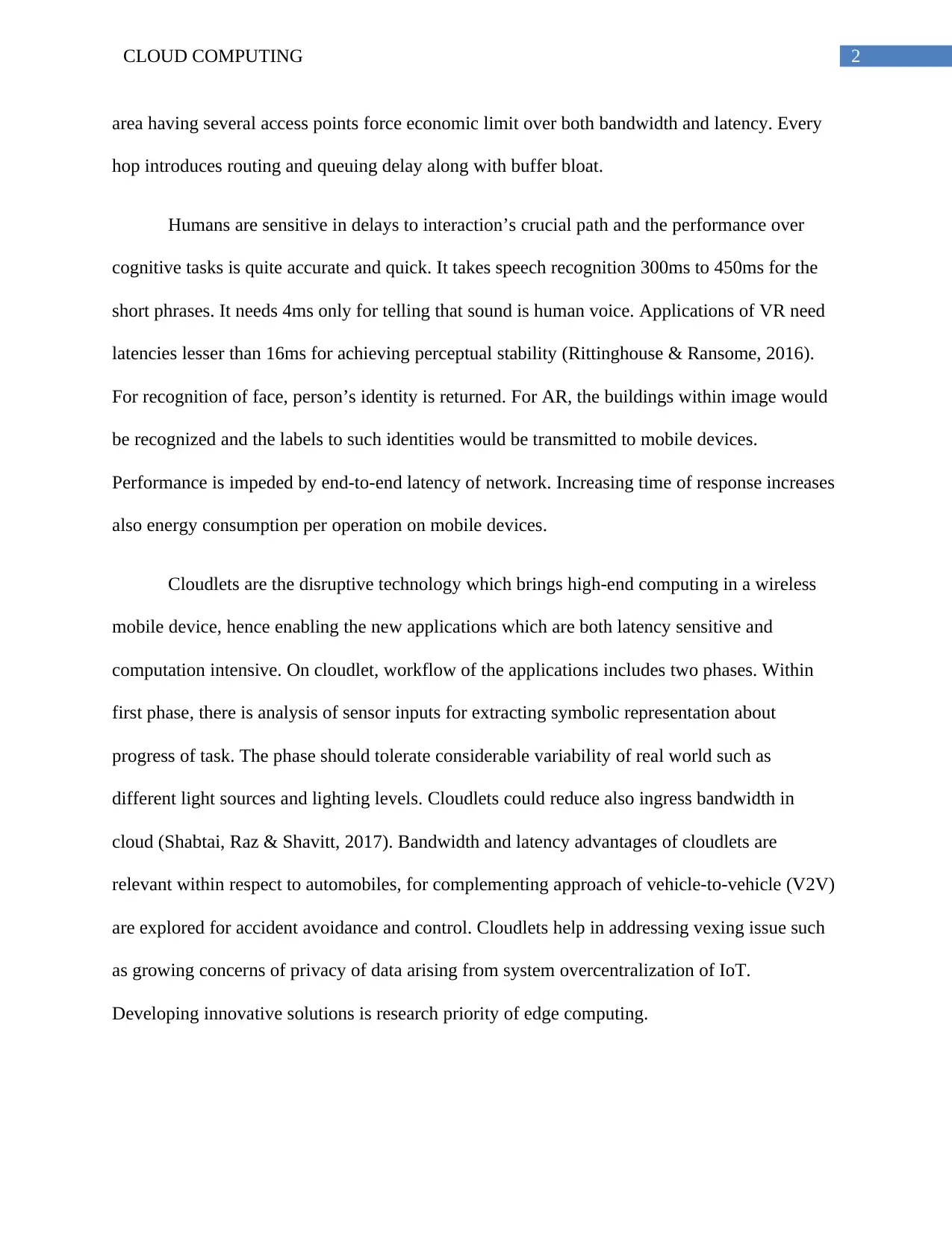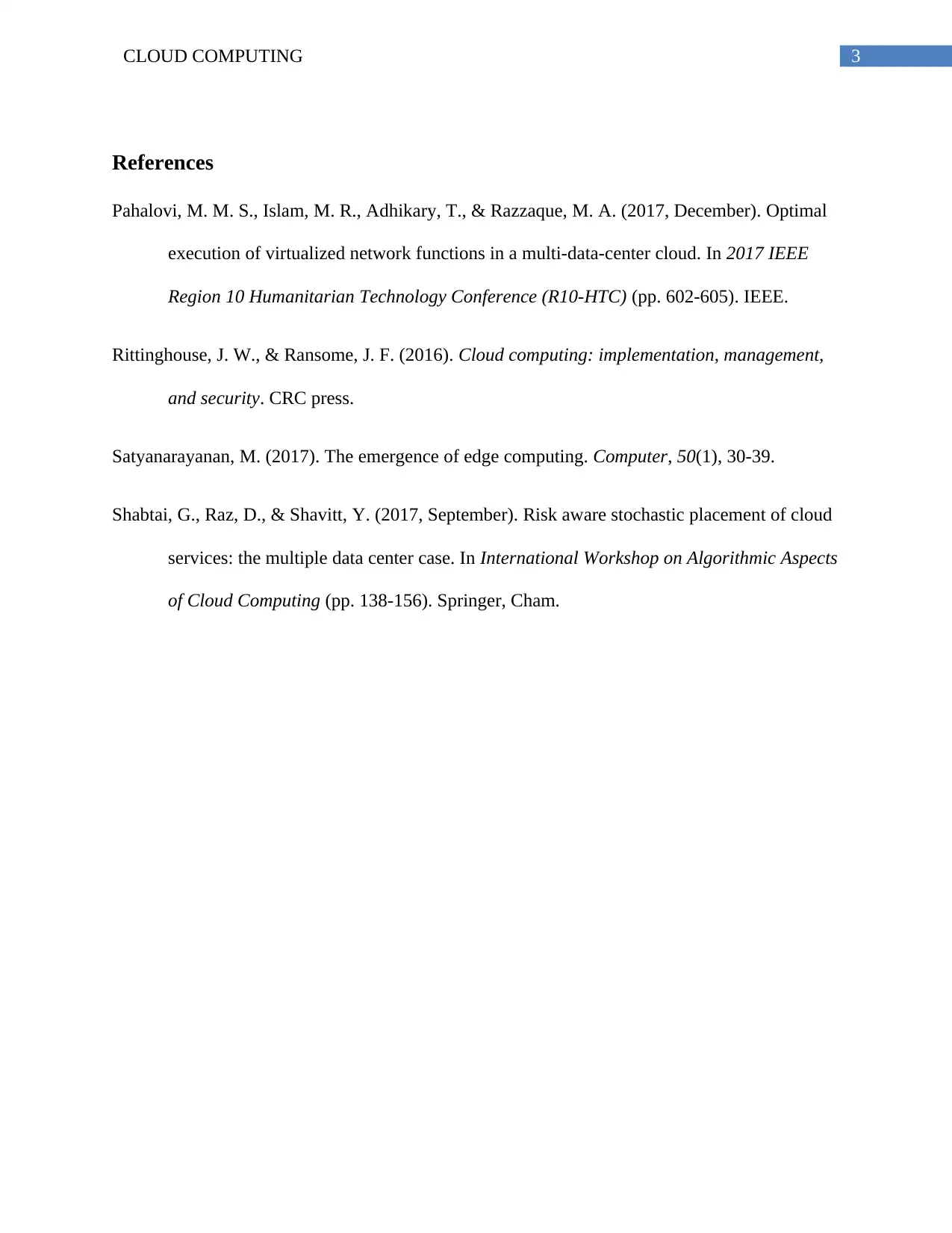Cloud Computing: Exploring Edge Computing's Impact and Applications
VerifiedAdded on 2022/08/23
|4
|807
|21
Report
AI Summary
This report provides an overview of cloud computing and its evolution, highlighting the emergence of edge computing as a significant paradigm shift. It discusses the economic advantages of cloud computing, such as cost reduction through centralization, but also addresses the limitations of relying solely on centralized cloud infrastructure, particularly for latency-sensitive applications in areas like IoT and mobile computing. The report introduces edge computing concepts, including cloudlets, fog nodes, and micro datacenters, emphasizing their role in bringing computing resources closer to the data source. It explores the benefits of proximity in terms of reduced latency and bandwidth consumption, which are crucial for applications like virtual reality, augmented reality, and real-time data processing. The report also touches upon the Radio Applications Cloud Server (RACS) platform and the importance of edge computing in addressing data privacy concerns. References to relevant research papers provide additional context and support the analysis of these technologies.
1 out of 4







![[object Object]](/_next/static/media/star-bottom.7253800d.svg)